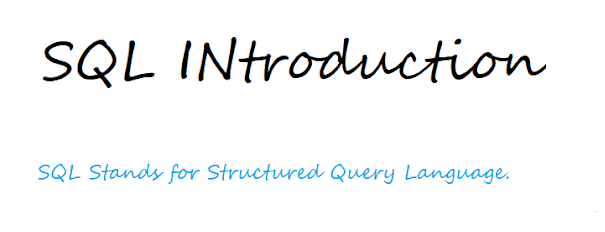SQL Introduction - The Coding Shala
Home >> Learn SQL >> SQL Introduction
Other Posts You May Like
Please leave a comment below if you like this post or found some errors, it will help me to improve my content.
SQL INTRODUCTION
SQL stands for Structured Query Language. SQL is an ANSI(American National Standards Institute) standard language for operating relational databases. It is used to create, maintain and retrieve the relation database. It lets you access and manipulate databases. SQL is used to perform all type of data operations in RDBMS(MySql, Oracle, Sybase, MS Access, etc.)
- SQL is not a database, it is just a query language. To perform SQL queries you need to install a database like Oracle, MySQL, SQL Server, etc.
Relational Database Management System(RDBMS)
Relational database means the data is stored in the form of relations or tables and also retrieved in the form of tables.
Terminologies::
Table: The data in RDBMS is stored in database objects which are called tables.
Attribute: Attributes are the properties that define a relation.
Tuple: Each row in the relation is known as a tuple. It is also called a record.
Column: Column represents the set of values for a particular attribute or we can say every table is broken up into smaller entities called fields. Fields are just columns.
Null Value: Null value in a table is a value in a field that appears to be blank means no value.
Constraints: Constraints are the rules that applied to data columns on a table.
Normalization: Normalization is the process of efficiently organizing data in a database.
SQL Commands:
SQL Commands are used to interact with relational databases to perform the update, select, create, delete, etc. operations. We can classify these commands into the following groups -
- DDL - Data Definition Language
- DML - Data Manipulation Language
- DCL - Data Control Language
DML contains SELECT, INSERT, UPDATE, AND DELETE.
DCL contains GRANT and REVOKE.
Other Posts You May Like
Prev<< SQL Create Table NEXT >>SQL CREATE Table

Comments
Post a Comment